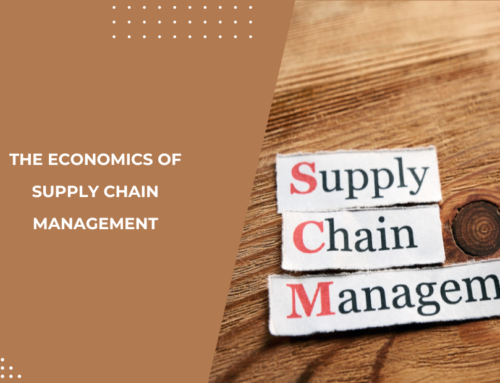In the fast-paced world of supply chain management, businesses are constantly looking for ways to improve efficiency, reduce costs, and meet customer demands. But how do you measure the success of a supply chain? The answer lies in carefully selected performance metrics, or key performance indicators (KPIs), that provide valuable insights into different aspects of the supply chain. In my years working with supply chain optimization, I’ve learned that focusing on the right KPIs can make or break a company’s ability to stay competitive. Let’s dive into the five key performance metrics that I recommend every business tracks to ensure their supply chain is operating at its peak.
1. On-Time Delivery Rate (OTD)
One of the most critical KPIs in supply chain management is the On-Time Delivery Rate (OTD). This metric measures the percentage of orders delivered within the agreed-upon timeframe. A consistently high OTD indicates that your supply chain is reliable, while a low rate can point to inefficiencies in logistics, warehousing, or supplier management. Late deliveries can hurt your business, leading to dissatisfied customers and potential loss of future business opportunities.
When I look at supply chain performance, OTD is often the first metric I evaluate. A healthy OTD not only improves customer satisfaction but also builds trust and credibility with your clients. From my perspective, improving OTD comes down to better communication with suppliers and a thorough evaluation of internal processes, from order processing to final delivery.
In practice, businesses should adopt technology solutions like real-time tracking systems to ensure delivery schedules are followed closely. These systems provide transparency and allow for quick identification and resolution of any disruptions, ensuring that deliveries are made on time, even when unexpected delays arise.
Actionable Tip: Consider working with logistics partners who offer guaranteed delivery times and invest in technology solutions to monitor shipments in real-time. Improving communication between all stakeholders in the supply chain—especially suppliers and transportation providers—can significantly boost your OTD performance.
2. Inventory Turnover Rate
The Inventory Turnover Rate is a critical metric that reflects how efficiently a company is managing its stock. This metric measures how often your inventory is sold and replaced within a specific timeframe, such as a month or a year. A high turnover rate typically means that your products are in demand and are moving through the supply chain efficiently. Conversely, a low turnover rate can signal that you are holding onto excess inventory, which can lead to higher storage costs and wasted resources.
From my experience, improving inventory turnover requires a balance between meeting customer demand and minimizing excess stock. Inventory that moves too slowly not only ties up capital but also increases carrying costs, such as warehouse storage fees and insurance premiums. On the flip side, moving products too quickly without sufficient stock can lead to missed sales opportunities. This is why striking the right balance is key to optimizing supply chain performance.
One effective strategy to improve inventory turnover is the implementation of just-in-time (JIT) inventory systems, which aim to reduce the amount of inventory held by ordering and receiving goods only as needed. This reduces the cost of holding inventory while ensuring that products are available when customers need them. Another approach is to invest in demand forecasting tools that use historical data to predict future sales trends more accurately, allowing for better inventory management.
Actionable Tip: Review historical sales data regularly to identify patterns and adjust your inventory accordingly. Also, communicate with suppliers about expected demand to avoid holding excessive stock or running into stockouts.
3. Perfect Order Rate
A high Perfect Order Rate (POR) means that orders are being fulfilled without any issues—no delays, no damaged goods, and no missing paperwork. This KPI is crucial because it measures the accuracy and efficiency of the entire order fulfillment process, from picking and packing to shipping and delivery. Achieving a perfect order rate requires that all parts of the supply chain are working harmoniously, and any breakdown in communication or process can result in errors that negatively affect this metric.
One of the most common issues that I see affecting the perfect order rate is human error, particularly in warehouse operations. Implementing automation technologies—such as robotic picking systems or barcoded inventory systems—can reduce these errors significantly. Additionally, regular training for warehouse staff and clear communication with suppliers can ensure that orders are processed and shipped correctly the first time.
When businesses achieve a high perfect order rate, they not only reduce the costs associated with returns and rework but also enhance customer satisfaction, which is crucial in building long-term relationships with clients. In my experience, this KPI should be monitored closely and regularly to spot areas where improvements can be made.
Actionable Tip: Invest in automation tools for warehouse management and ensure that quality control checks are in place at every stage of the order fulfillment process to minimize errors.
4. Cash-to-Cash Cycle Time
The Cash-to-Cash Cycle Time is one of the most important financial KPIs for supply chain management. It measures the time it takes for a company to convert its inventory investments into cash from sales. The shorter this cycle, the better it is for the company’s liquidity and working capital. The cash-to-cash cycle encompasses the entire process from purchasing raw materials to receiving payment from customers after selling finished goods.
In practice, this KPI can highlight areas where cash is tied up unnecessarily, such as holding too much inventory or having inefficient payment terms with suppliers. Reducing the cash-to-cash cycle involves improving processes at multiple points in the supply chain, including negotiating shorter payment terms with suppliers, optimizing inventory levels, and accelerating customer payments.
In my opinion, companies can improve this KPI by working with suppliers to extend payment terms, while simultaneously improving their own collections processes to receive payments faster from customers. Another effective strategy is adopting inventory optimization tools that prevent overstocking and ensure that inventory is aligned with customer demand.
Actionable Tip: Negotiate better payment terms with suppliers, and consider offering incentives to customers who pay invoices early. Streamline your accounts receivable processes to reduce the time it takes to receive payments.
5. Order Fulfillment Cycle Time
The Order Fulfillment Cycle Time measures the total time it takes from receiving a customer order to delivering the product. This KPI is crucial because it impacts customer satisfaction and is often used as a benchmark for the overall efficiency of a supply chain. A long cycle time can indicate bottlenecks in your processes, such as delays in picking, packing, or shipping, while a short cycle time means your supply chain is running smoothly and efficiently.
Improving this metric requires careful analysis of every step in the order fulfillment process. From my experience, many companies can reduce cycle times by investing in warehouse automation systems, improving staff training, or refining their shipping processes. Faster order fulfillment not only increases customer satisfaction but also improves a company’s competitive edge by reducing lead times.
One key area to focus on is the use of technology to streamline order processing and improve coordination across different departments. By integrating supply chain management software, companies can reduce errors and ensure that orders move through the system more quickly.
Actionable Tip: Analyze each stage of the order fulfillment process to identify where delays occur. Consider implementing automation to speed up order processing and shipping times.
Top 5 Key Indicators for Supply Chain Performance:
- On-Time Delivery Rate (OTD)
- Inventory Turnover Rate
- Perfect Order Rate
- Cash-to-Cash Cycle Time
- Order Fulfillment Cycle Time
Why These KPIs Matter
The key to a successful supply chain lies in monitoring these KPIs consistently. They provide a clear window into the performance and health of the supply chain, enabling businesses to make data-driven decisions. By focusing on improving on-time delivery and inventory turnover, companies can meet customer demands efficiently while minimizing costs. Likewise, reducing the cash-to-cash cycle time helps in maintaining a healthy cash flow, which is critical for sustaining operations and growth.
Achieving a high perfect order rate and shortening the order fulfillment cycle will not only boost customer satisfaction but also improve operational efficiency. Through regular monitoring and continuous improvement of these key metrics, businesses can stay ahead in the competitive landscape and ensure the long-term success of their supply chain.
Bringing It All Together: Key Insights for Supply Chain Success
Supply chain management is a complex yet crucial part of business operations. By tracking the five KPIs outlined above, companies can gain valuable insights into their performance and identify areas for improvement. Whether you’re looking to improve delivery times, reduce costs, or optimize inventory, these metrics provide a clear path to better decision-making. In my experience, businesses that consistently monitor and act on these KPIs are the ones that achieve long-term success in their supply chains.









